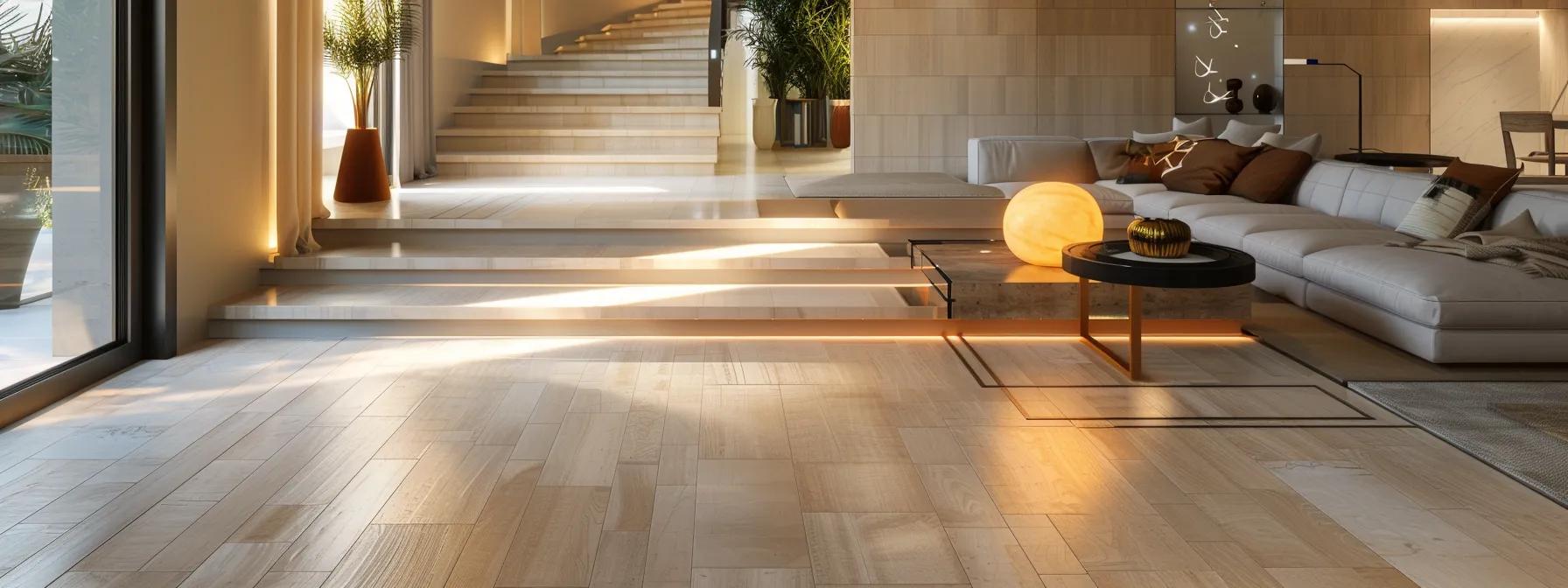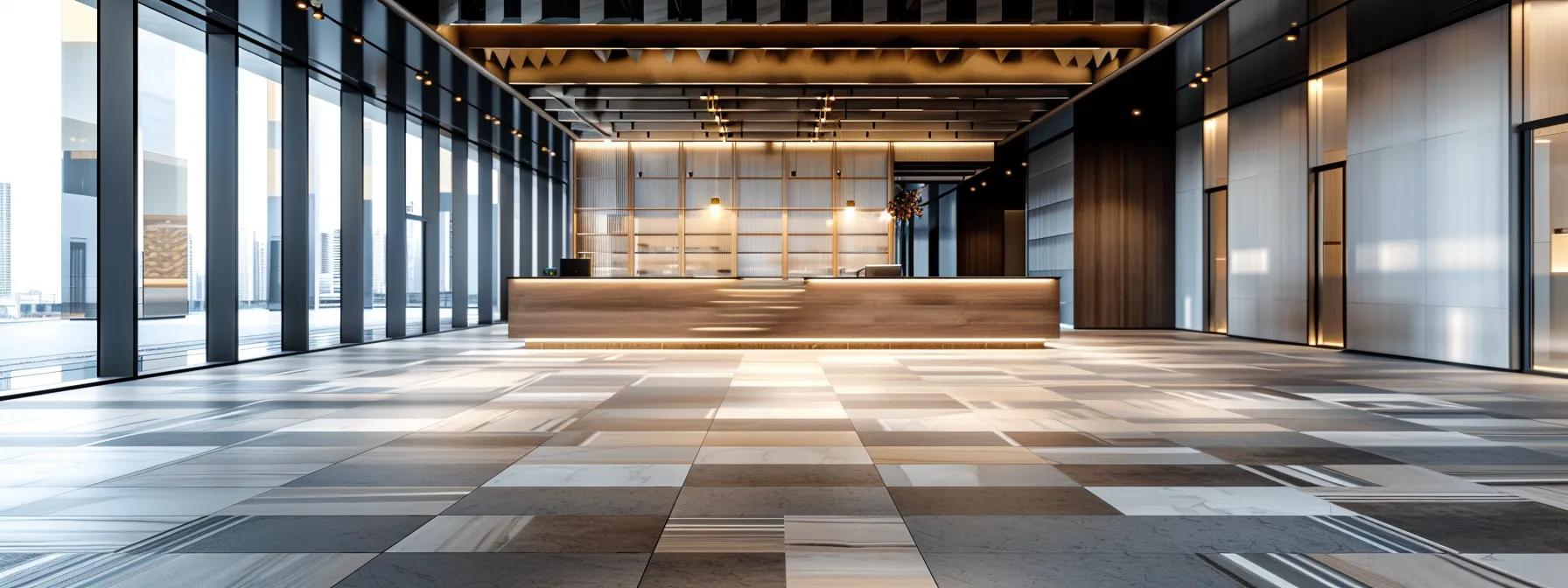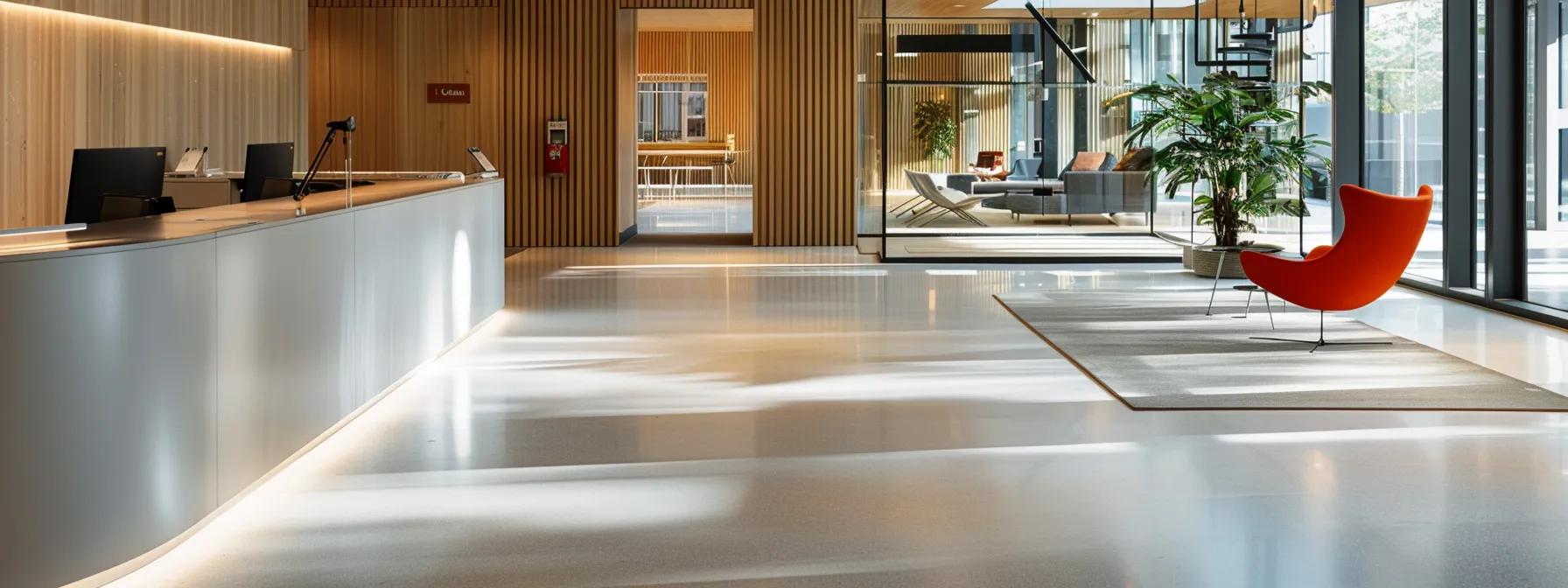
Top 5 Flooring Trends for 2025: Styles You’ll Love and How to Choose Them
Key Takeaways
Flooring trends for 2025 emphasize innovative materials, eco-friendly practices, and contemporary design aesthetics.
Hardwood remains a favorite thanks to new finishes and sustainable sourcing.
Laminate, vinyl, and tile offer modern options that balance durability with style.
Sustainability and professional installation are crucial when selecting flooring.
Homeowners and designers must match materials with décor, functionality, and environmental priorities.
Flooring continues to play a crucial role in interior design and home functionality. With emerging materials and design philosophies, 2025 brings a dynamic landscape where sustainability, minimalism, and modern technology converge. This article provides concise insights into current flooring trends, the benefits of various materials, and key criteria for selecting a style that suits modern living.
What Are the Top Flooring Trends for 2025?

Flooring trends in 2025 focus on large format materials, unique patterns, and composite solutions that merge aesthetics with performance. Homeowners seek floors that offer visual appeal, durability, and eco-friendly qualities.
Which Flooring Materials Are Leading the 2025 Trends?
Natural options like hardwood, engineered wood, and laminate are popular with designs such as wide planks and herringbone patterns. Innovative composites and sheet vinyl flooring mimic natural textures while adding enhanced durability. Manufacturers now incorporate wear layers and stain resistance, ensuring these surfaces meet everyday demands.
Engineered wood comes in finishes ranging from warm taupes to deep earth tones. This move supports biophilic design and minimalism by reducing visual clutter and emphasizing a clean, natural look.
How Do Colors and Textures Influence 2025 Flooring Styles?
Colors in 2025 lean toward earthy hues. Warm neutrals like beige and taupe, along with subtle wood grain patterns, create inviting spaces. Designers blend textures that echo stone or reclaimed wood, enhancing both tactile appeal and visual depth. These elements work in tandem with underfloor heating systems, offering energy efficiency along with elegant design.
What Styles Are Homeowners and Designers Loving in 2025?
Modern interiors favor open, airy spaces with clean lines and neutral colors. Popular styles include herringbone, parquet, and wide-plank flooring. Floors that integrate underfloor heating, noise reduction, and moisture resistance are valued in kitchens, bathrooms, and multi-use areas. Designers also use multi-functional tile installations—geometric and mosaic patterns add dramatic yet functional accents to open plan settings.
Why Is Hardwood Flooring Still Popular in 2025?
Hardwood flooring remains a top choice for its timeless beauty and durability. Its natural warmth and modern finishes continue to enhance a wide range of interior styles.
What New Hardwood Finishes and Colors Are Trending?
Innovative hardwood finishes now feature matte and low-luster coatings for a natural look over traditional high-gloss options. Popular shades include walnut, oak, and reclaimed wood tones. These finishes highlight the wood’s natural grain while improving stain resistance and environmental durability. Advances in finishing technology mean quicker curing times and reduced chemical exposure during installation, appealing to eco-conscious consumers.
How Does Hardwood Flooring Fit Into Sustainable Home Design?
Sustainable practices are a driving force behind hardwood’s popularity. FSC-certified wood and engineered hardwood made from layered construction reduce pressure on natural forests. Reclaimed wood also finds favor as designers strive to reduce waste. With the ability to be refinished over time, hardwood remains a long-lasting, eco-friendly option that pairs warmth with environmental responsibility.
What Are the Benefits of Professional Hardwood Installation?
Expert installation ensures hardwood is acclimatized, precisely fitted, and securely fastened to avoid issues like warping and squeaking. Professionals use proper subfloor preparation and high-quality adhesives, resulting in a seamless finish that maximizes thermal conductivity—especially beneficial when paired with underfloor heating systems.
How Are Laminate and Vinyl Flooring Evolving in 2025?

Laminate and vinyl flooring have evolved to deliver modern aesthetics and enhanced performance. These materials now offer a range of designs that replicate natural textures while standing up to daily wear.
What Innovative Designs Are Laminate and Vinyl Offering This Year?
Contemporary laminate and vinyl feature textures from realistic wood grains to bold geometric patterns. Sheet vinyl can now mimic large continuous surfaces seen in natural stone or wood. With high-resolution digital printing and added anti-slip, waterproof features, these products are designed for both beauty and functionality. Enhanced wear layers improve resistance to scratches and dents, making them ideal for high-traffic areas.
How Do Durability and Maintenance Compare for Laminate vs. Vinyl?
Both flooring types offer low maintenance and lasting performance. Laminate resists scratches and dents, making it suitable for busy households. Vinyl, particularly luxury vinyl tile (LVT), excels in moisture and stain resistance, ideal for kitchens and bathrooms. The table below summarizes key differences:
FeatureLaminate FlooringVinyl FlooringDurabilityHigh scratch and dent resistanceExcellent moisture and stain resistanceMaintenanceEasy cleaning; low care neededWipes clean; ideal for wet areasDesign OptionsRealistic textures and patternsModern prints with seamless designsInstallationClick-lock, floating systemsAdhesive or click-lock options
Which Rooms Benefit Most From Laminate and Vinyl Flooring?
Laminate and vinyl work well in kitchens, living rooms, and basements. Vinyl’s water resistance makes it a top choice for bathrooms and kitchens where spills are common, while laminate’s warmth adds charm to family rooms and corridors. Noise reduction features in both types also make them suitable for bedrooms and studies.
What Tile Flooring Trends Are Shaping 2025 Interiors?
Tile flooring remains a versatile option, celebrated for its innovative formats and lasting aesthetic value. New trends emphasize large format tiles and intricate patterns that blend functionality with modern design.
Which Tile Materials and Patterns Are Trending in 2025?
Porcelain and ceramic tiles that mimic natural stone, such as marble or limestone, are increasingly popular. Bold patterns like checkerboard or mosaics serve as accent pieces, especially in kitchens and bathrooms. Large format tiles minimize grout lines, creating a cleaner, contemporary look that simplifies maintenance.
How Can Tile Flooring Enhance Kitchen and Bathroom Designs?
Tiles offer both style and practicality for areas with high moisture. A polished porcelain floor paired with underfloor heating lends sophistication to kitchens, while anti-slip, water-resistant tiles in bathrooms ensure safety and ease of cleaning. Design versatility is further enhanced by using border tiles or medallions to accent architectural features.
What Installation Tips Ensure Long-Lasting Tile Floors?
Proper installation is key to tile longevity. This involves preparing a level subfloor, using high-quality adhesives, and spaced grout lines to prevent cracks. Sealed grout systems help reduce staining and enhance durability. Regular sealing, particularly for natural stone tiles, prolongs their life and preserves the elegant finish.
How Is Sustainability Influencing Flooring Choices in 2025?

Sustainability is a cornerstone of 2025 flooring trends. Eco-friendly practices not only protect the environment but also add value to homes through energy efficiency and healthier indoor spaces.
What Eco-Friendly Flooring Materials Are Gaining Popularity?
Materials such as bamboo, cork, and reclaimed wood are gaining prominence. Bamboo offers rapid renewal and durability, while cork provides excellent insulation without harming trees. Linoleum, crafted from natural ingredients like linseed oil and wood flour, is celebrated for its biodegradability and robust performance.
How Do Sustainable Flooring Options Impact Home Value and Style?
Eco-friendly flooring appeals to buyers focused on energy efficiency and environmental sustainability. Homes with non-toxic, responsibly sourced materials often qualify for green certifications, which can lead to long-term savings. These materials offer unique textures and natural color palettes, aligning with modern interior design trends and enhancing both style and market value.
What Certifications and Brands Lead in Sustainable Flooring?
Certifications such as FSC and GreenGuard are key indicators of sustainable practices. Reputable brands like Armstrong, Tarkett, and Mannington provide detailed environmental declarations, ensuring consumers receive products with minimal environmental impact.
How Can You Choose the Right Flooring Style for Your Home in 2025?
Selecting the ideal flooring involves balancing design trends, functionality, and personal style. Homeowners must consider aesthetics, durability, maintenance, and energy efficiency to achieve optimal results.
What Factors Should Homeowners Consider When Selecting Flooring?
Consider room usage, moisture exposure, lighting, and budget. High-traffic areas might require durable options like porcelain or luxury vinyl, whereas low-traffic spaces can showcase the beauty of hardwood. The installation method—floating versus glue-down—also impacts appearance and longevity.
How Do Interior Designers Recommend Matching Flooring With Décor?
Designers suggest that flooring should complement, not compete with, other elements. Neutral bases like light hardwood or tile work well with bold accent walls and furniture, creating visual contrast and harmony. Sample boards can help homeowners visualize how varying textures and colors interact with their overall décor.
What Are the Latest Flooring Color and Texture Combinations to Try?
Current trends combine warm neutrals with subtle accent hues. High-gloss oak paired with matte taupe carpets or textured cork with brushed metallic details creates depth and warmth. A monochromatic palette with slight tonal variations can deliver a minimalist yet inviting look.
What Are the Benefits of Professional Flooring Installation in 2025?

Professional installation is essential to fully realize the design and performance benefits of new flooring. Expert installers ensure a flawless finish by accounting for subfloor conditions, climate effects, and precise material alignment.
Why Is Expert Installation Important for Trending Flooring Styles?
Proper installation prevents issues such as squeaks, warping, and premature wear. Skilled professionals adjust for humidity and subfloor irregularities, ensuring that advanced features like seamless vinyl or intricate tile patterns are executed correctly for lasting appeal.
How Do Installation Services Vary by Flooring Type?
Different materials require specialized techniques. Hardwood may need precise nailing or gluing and acclimatization, while vinyl and laminate benefit from click-lock systems. Tile installations demand careful planning of grout lines and sealing to avoid water damage.
What Should Customers Expect During a Professional Flooring Consultation?
A flooring consultation typically includes an assessment of current conditions, measurement of space, and discussion of design preferences. Experts review maintenance needs, warranty options, and installation timelines, enabling homeowners to make informed decisions that align with both their vision and functional requirements.
Frequently Asked Questions
Q: What makes 2025 flooring trends unique compared to previous years? A: 2025 trends emphasize sustainability, large format designs, innovative textures, and integration with modern heating systems.
Q: How can hardwood flooring remain competitive amid new materials? A: Enhanced finishes, sustainable sourcing, and expert installation keep hardwood both beautiful and durable.
Q: Are laminate and vinyl flooring suitable for high-traffic households? A: Yes, both offer advanced wear layers and moisture resistance ideal for active, multi-functional spaces.
Q: What sustainable flooring options are available? A: Options such as bamboo, cork, reclaimed wood, and linoleum are popular for their renewable nature and eco-friendly certifications.
Q: How important is professional installation for modern flooring designs? A: Professional installation ensures proper subfloor preparation, precise placement, and longevity, which are critical for high-end flooring.
Final Thoughts
Flooring trends in 2025 set a new standard, blending sustainability, durability, and innovative design. Homeowners can choose from hardwood, laminate, vinyl, and tile solutions that balance aesthetic appeal with practical needs. By embracing eco-friendly materials and relying on professional installation, modern flooring not only beautifies a space but also endures the demands of contemporary living. Selecting the right flooring is a pivotal step in creating a resilient and attractive home environment.
